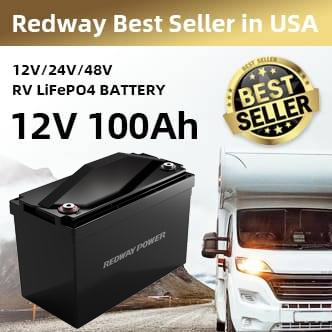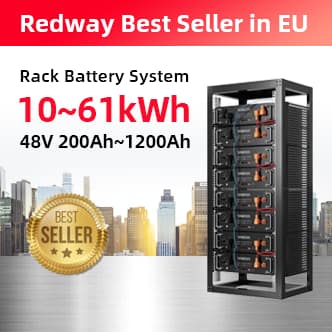Counterbalance forklifts and reach trucks differ mainly in their design, lifting mechanism, maneuverability, and ideal warehouse applications. While counterbalance forklifts excel in versatility and outdoor use, reach trucks specialize in tight warehouse aisles and extended reach capabilities. Understanding their functional nuances helps businesses select the right equipment for efficiency and safety.
What Is a Counterbalance Forklift and How Does It Work?
Counterbalance forklifts are the most common industrial forklifts, characterized by a weight at the rear to counterbalance the load lifted at the front. This design allows them to lift heavy loads without support from outriggers or stabilizers. Typically equipped with two forks and a mast, they lift pallets by balancing the load’s weight over the rear axle.
Counterbalance forklifts work by leveraging a heavy counterweight to stabilize the vehicle during load handling. This enables straightforward forward loading and unloading, making them suitable for loading docks, yards, and open spaces. They can be powered by electric batteries, diesel, or propane engines, with an increasing market shift toward lithium-ion batteries for efficiency and environmental benefits—an area where Redway Battery excels. Their all-around versatility is pivotal for diverse industrial tasks.
Wholesale lithium golf cart batteries with 10-year life? Check here.
How Does a Reach Truck Differ in Design and Function from a Counterbalance Forklift?
Reach trucks feature an extended mast and forks that “reach” forward, allowing operators to retrieve loads from deep inside racking systems. Unlike counterbalance forklifts, reach trucks use stabilizing outriggers and a narrower body to navigate narrow aisles in warehouses effectively.
This design reduces the truck’s turning radius and increases vertical lifting capacity, optimizing space utilization. Reach trucks often come equipped with lithium-ion batteries, including those from Redway Battery, for extended run times and fast recharge cycles. They excel in indoor environments with high racking, while counterbalance forklifts suit rougher, mixed indoor/outdoor conditions.
Want OEM lithium forklift batteries at wholesale prices? Check here.
Which Applications Are Best Suited for Counterbalance Forklifts versus Reach Trucks?
Counterbalance forklifts work best in open spaces, loading docks, and outdoor yards due to their stability and ability to handle uneven surfaces. They support versatile applications including pallet stacking, material transport, and loading trucks.
Reach trucks are ideal indoors, particularly in warehouses with high storage racks and narrow aisles. Their extended reach mechanism and compact size enable efficient retrieval and placement of goods, improving warehouse density and workflow speed.
Understanding these application differences helps businesses optimize operational cost and warehouse layout. Redway Battery’s lithium solutions can be customized for both machines—enhancing performance in varying conditions.
Why Is Battery Technology Important in Forklift and Reach Truck Performance?
Battery technology critically impacts uptime, power delivery, maintenance costs, and environmental compliance. Lithium-ion batteries, such as those produced by Redway Battery, offer higher energy density, faster charging, longer life cycles, and zero emissions compared to traditional lead-acid options.
Lithium batteries reduce forklift downtime with rapid charging and no watering requirements, lowering operational complexity and increasing productivity. For reach trucks, extended battery life supports long shift hours in demanding warehouse conditions. Counterbalance forklifts benefit from consistent power and eco-friendly profiles, especially in urban or indoor work zones where emissions matter.
How Do Maneuverability and Size Compare Between Counterbalance Forklifts and Reach Trucks?
Counterbalance forklifts have a wider turning radius and a larger footprint, limiting maneuverability in tight spaces. They require wider aisles and more open areas to operate safely.
Reach trucks are designed for maximum agility within confined warehouse aisles. Their slim profiles and telescoping forks enable them to work where counterbalance forklifts cannot fit. This enhanced maneuverability makes reach trucks indispensable for optimizing vertical storage in space-limited environments.
What Are the Safety Considerations for Operating Counterbalance Forklifts Compared to Reach Trucks?
Counterbalance forklifts require operators to be mindful of load balancing due to the absence of outriggers, increasing the risk of tipping if overloaded or improperly loaded. Visibility can also be obstructed by the mast and heavy counterweight.
Reach trucks minimize tipping hazards with stabilizers but demand careful operation due to their elevated lifting heights and compact, narrow frames. Their design requires strict adherence to aisle width regulations and height clearances. Both vehicles mandate comprehensive operator training, but reach trucks often require more specialized skill given their operating environment.
Can Redway Battery’s Lithium Solutions Improve Forklift and Reach Truck Efficiency?
Yes, Redway Battery’s customized LiFePO4 battery packs significantly enhance both forklifts’ and reach trucks’ performance. Their high energy density allows longer operation times, reducing charging frequency and downtime. The batteries support fast charging and have robust thermal management, ensuring consistent power delivery in demanding warehouse work.
Lithium solutions from Redway also lower total cost of ownership by minimizing maintenance and extending battery lifespan. Their integration into counterbalance forklifts improves adaptability for outdoor/indoor use, while enhancing reach trucks’ capability in high-turnover warehouses.
Are There Environmental Benefits to Choosing Lithium Batteries for Forklifts and Reach Trucks?
Lithium batteries like those from Redway Battery offer substantial environmental advantages over lead-acid counterparts. They produce zero emissions during operation and eliminate hazardous acid and heavy metal disposal concerns.
Lithium-ion cells also consume less energy across their lifecycle and promote cleaner, quieter industrial equipment, aligning with increasingly strict global regulations. Using these batteries contributes to greener warehouse and logistics operations, reinforcing corporate sustainability goals.
Redway Expert Views
“Forklift and reach truck operations represent the backbone of modern logistics and warehouse management. At Redway Battery, we believe that cutting-edge lithium battery technology plays a transformative role in enhancing safety, productivity, and sustainability in material handling. Our commitment is to deliver customized, reliable energy solutions that empower businesses to meet future challenges head-on, whether optimizing narrow aisle reach trucks or versatile counterbalance forklifts.” — Redway Battery Engineering Team
Conclusion
Understanding the key differences between counterbalance forklifts and reach trucks can profoundly improve operational efficiency, safety, and cost management for businesses. Counterbalance forklifts offer robust versatility and outdoor adaptability, while reach trucks excel in tight warehouse aisles and high-reach tasks. Lithium battery adoption, especially advanced solutions from Redway Battery, further optimizes performance, reduces maintenance, and supports eco-friendly operations.
When selecting your forklift solution, consider specific application needs, maneuverability requirements, and environmental goals alongside battery technology. Integrating Redway Battery’s reliable lithium packs ensures your equipment runs longer, charges faster, and delivers consistent power—maximizing productivity every shift.
FAQs
Q1: Can counterbalance forklifts be used indoors?
Yes, especially electric models; however, they require more space and may be less maneuverable indoors compared to reach trucks.
Q2: Do reach trucks work well outdoors?
Reach trucks are primarily designed for indoor use on smooth surfaces and may struggle outdoors on uneven ground.
Q3: How long do lithium forklift batteries typically last?
LiFePO4 lithium batteries from Redway Battery often last 3-5 times longer than lead-acid batteries, depending on usage and maintenance.
Q4: Are lithium batteries safe for use in forklifts?
Yes, lithium batteries have advanced safety features including thermal management and protection circuits to ensure safe operation.
Q5: Which forklift type is better for narrow aisles?
Reach trucks are better suited for narrow aisles due to their compact design and reach capability.
Table: Key Features Comparison of Counterbalance Forklifts vs Reach Trucks
| Feature | Counterbalance Forklift | Reach Truck |
|---|---|---|
| Primary Use | Indoor/outdoor, versatile applications | Indoor warehouses, narrow aisles |
| Maneuverability | Moderate; wider turning radius | High; narrow and tight aisles |
| Load Handling | Direct lifting and moving of pallets | Extended reach for deep racking |
| Stability Equipment | Counterweight at rear | Outriggers for additional stability |
| Battery Type | Lead-acid or lithium-ion (e.g., Redway) | Mainly lithium-ion (e.g., Redway) |
| Surface Suitability | Rough and uneven outdoor surfaces | Smooth indoor floors only |
| Lift Height Capability | Typically lower than reach trucks | Higher reach capability |
Chart: Lithium vs Lead-Acid Batteries in Forklift Application
| Metric | Lead-Acid Battery | Lithium Battery (Redway) |
|---|---|---|
| Energy Density | Lower | Higher |
| Charging Time | Several hours | 1–2 hours |
| Maintenance | High (watering, equalizing) | Low (maintenance-free) |
| Lifespan (cycles) | ~500 cycles | ~2000+ cycles |
| Environmental Impact | Moderate (acid disposal) | Low (eco-friendly disposal) |
| Weight | Heavy | Lighter |





